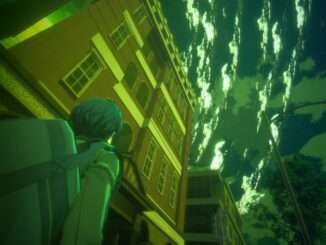
Optimization tips to have higher FPS in Persona 3 Reload on Steam Deck (SteamOS).
How to Optimize the Game
All credit goes to Konrados232!
In-Game Settings
Graphics Settings
- Rendering Scale: keep around 100% for best performance/quality ratio.
- Shadow Quality: isn’t that impactful.
- Background Brightness: doesn’t really matter, adjust as you like.
- Frame Rate Limit: 60 for LED Deck, try 120 for OLED Deck if 60 isn’t enough (although some locations have hard time reaching 60 fps).
- Reflections: TURN OFF – major fps boost in the game.
Display Settings
- Resolution: keep around the Deck’s native resolution – so 1280×800 or 1280×720 whichever allows you.
- Screen Mode: check different settings to see which is the sharpest one. For me it’s actually Windowed mode.
- Monitor: Steam Deck has only one screen. Or does it?
- VSync: preference, probably better with 60 fps cap.
Launcher Settings
Proton Settings
As for the time around the release, the biggest problem with Persona 3 Reload on the Steam Deck is outdated Proton. In the future this step wouldn’t be needed when the changes are pushed to the major release but for now use these steps to get the latest Proton fixes:
- Go to your Steam Library and search Proton Experimental. Install if not already installed.
- Go into Properties, then Betas.
- Pick the bleeding-edge – latest and untested dvxk (…) (the longest one).
- Go to your Persona 3 Reload Properties, then Compatibility.
- Check Force the use of specific Steam Play compatibility tool.
- Pick Proton Experimental from the list.
The most notable areas affected by this change are Tartarus (is pretty smooth now) and Velvet Room (it isn’t 60 fps but still better than power point presentation).





its better to use Proton-Hotfix because it has some nice improvements for P3R. (it could be up to 5X the fps in some places)
Often overlooked, yet just as impactful, are ways to improve the Audio Output. It is possible to bypass the default “PulseAudio Output” used as the Sound Output.
With just the built in speakers of the OLED Deck I noticed a fairly dramatic improvement in general audio definition and volume by switching the Audio output to “ACP/ACP3X/ACP6x Audio Coprocessor Speaker”.
A HUGE caveat to this is that moving to a different audio solution requires updating Sound Output settings, likely because of the Steam OS/Proton translation layer, and the nonsensical saving these settings per specific Save File causes some annoyance at times. I have not had any issues with having to adjust the Sound Output settings when jumping between playing on the Steam Deck locally and my PC locally though, so that part is nice for when you get a chance to play it on your PC rather than Steam Deck for better visuals (usually).
The most important one is turning reflections off. The Reflection setting this game isn’t reflections themselves, but Lumen. Lumen is a UE5 technique that uses Ray Tracing to enhance lightning.
Awesome. I saw someone mention that the Bleeding Edge build was the best. I didn’t know that you could change the properties of the individual proton builds. Thanks for the info!
I haven’t seen a frame drop below 40 in Tartarus since the change. (with my TDP locked at 7 Watts for that extra battery life)